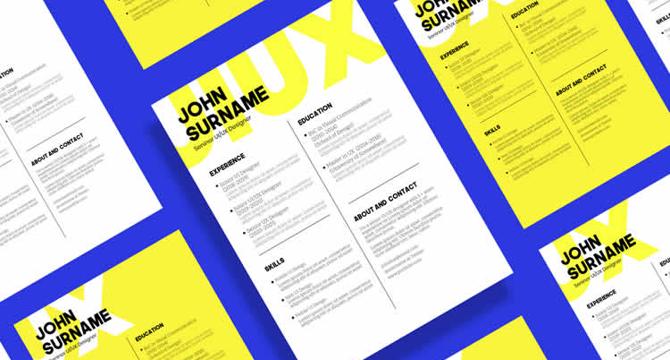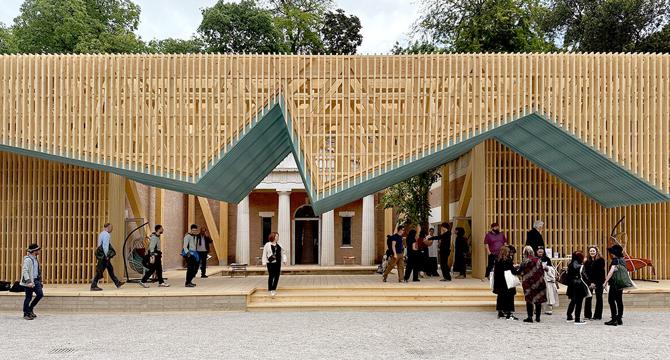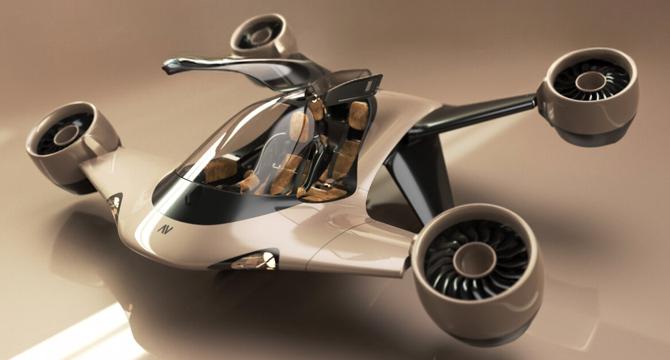Web Design
Medium
435

AI Meets UX: How Smart Features Are Shaping Modern Product Pages
- Machine learning analyzes user behavior and purchase patterns to provide relevant recommendations on product pages.
- AI helps in suggesting the best fit for clothing and footwear by comparing past purchases and body data.
- AI chatbots are now more advanced and assist with sizing, product information, delivery queries, and cross-sell offers.
- Visuals on product pages are enhanced with AI-generated 360° views and augmented reality previews for a more immersive experience.
Read Full Article
26 Likes
Dailydesignernews
155

Image Credit: Dailydesignernews
What Are the Key Components of a Quality Business Website?
- Having a quality business website is crucial for success in the digital age, with key components ensuring a great user experience and effective promotion of products and services.
- Choosing the right hosting plan is the first step, considering factors like reliability, space, bandwidth, customer support, and future scalability.
- An intuitive design is essential for user-friendliness and easy navigation, enhancing the overall user experience and driving traffic to the site.
- High-quality content that is relevant, engaging, and optimized for SEO is vital for attracting and retaining visitors while providing value to the audience.
- Implementing security features such as SSL encryption and two-factor authentication is crucial to protect customer data and prevent cyber-attacks.
- Optimizing the website for SEO increases visibility in search engine results, driving more traffic and improving online success for businesses.
- Ensuring the website is mobile-friendly is essential, given that a significant percentage of internet searches are conducted on mobile devices.
- Responsive design is necessary to adapt the website's layout to different devices and platforms, offering a seamless user experience and improving SEO rankings.
- By investing in intuitive design, high-quality content, security measures, SEO optimization, and mobile-friendliness, businesses can create a standout website that attracts and retains visitors.
- Creating an amazing user experience through a well-designed website with these key components can drive engagement, increase brand value, and contribute to overall business growth.
Read Full Article
9 Likes
Medium
342

Image Credit: Medium
A callous-ed love affair with Burt’s Bees Lip Balm: a reminder that products don’t live in vacuums
- Burt's Bees Lip Balm's design evokes honesty, humility, and all-natural qualities, with its simple color palette and serif logo.
- The product, made of beeswax and plant oils, was praised for its effectiveness in soothing lips without leaving a greasy residue.
- However, a major flaw was the cap's difficulty to open, causing struggles and even callouses on the user's thumbs.
- The application of lip balm as the last step in the skincare routine led to slippery fingers, making the tight cap even more challenging.
- Design should seamlessly fit into users' routines rather than causing disruptions, highlighting the importance of user-centric design.
- Considerations for manufacturing cost, usability, and hygiene were factors in the design of the lip balm container.
- The challenging cap design raised issues of inclusivity for people with limited dexterity or grip strength.
- The article presents a call for more inclusive and affordable design solutions to address challenges like the difficult lip balm cap.
- Despite the design flaw, the author still appreciates the effectiveness of Burt's Bees Lip Balm and prefers the original formula over the Honey variant.
- The article concludes with a reflection on the importance of inclusive design and the need for continuous improvement in product experiences.
Read Full Article
20 Likes
Speckyboy
346

Image Credit: Speckyboy
20+ Best Free Resume Templates for Creatives in 2025
- Resume design plays a crucial role in standing out when applying for creative jobs and the internet offers various basic templates.
- Free resume templates designed by professionals are ideal for creating standout resumes in the creative industry.
- Templates like Neat Resume, Minimalist Resume, and Clean & Modern Resume offer contemporary and customizable designs.
- Various formats like Word, Photoshop, AI, InDesign, Figma, and Illustrator are available for different templates.
- Focus areas include typography, minimalism, readability, clean layouts, and customizable sections for skills and experience.
- Features like resume, cover letter, portfolio templates, and bold typography cater to designers and creatives.
- Sections like contact details, professional summary, work experience, education, skills, achievements, and certifications are vital in resumes.
- Project or portfolio sections, language skills, and optional references can enhance resume content and presentation.
- Investing time and effort in resume design can highlight design skills and professionalism, increasing the chances of securing a dream job.
- Free resume templates catering to different preferences and styles provide creative professionals with tools to showcase their talents effectively.
Read Full Article
20 Likes
Discover more
- Programming News
- Software News
- Devops News
- Open Source News
- Databases
- Cloud News
- Product Management News
- Operating Systems News
- Agile Methodology News
- Computer Engineering
- Startup News
- Cryptocurrency News
- Technology News
- Blockchain News
- Data Science News
- AR News
- Apple News
- Cyber Security News
- Leadership News
- Gaming News
- Automobiles News
Designhill
306

Image Credit: Designhill
Common Mistakes to Avoid When Using AI for Logo Design
- Artificial Intelligence is commonly used in graphic design, including logo design, to quickly generate unique ideas for logos that reflect brand messages and personality.
- Understanding AI's limitations and strengths is crucial to designing a logo that truly resonates with your brand, rather than feeding generic inputs into an AI tool.
- Pros of AI-generated logos include cost-effectiveness, brainstorming multiple design ideas quickly, easy customization, accessibility, and responsive designs across platforms.
- Common cons include lack of originality, generating generic designs, lack of emotional connection, and dependence on templates rather than human creativity.
- Common mistakes in AI logo design include not considering brand identity, using too many design elements, neglecting color psychology, following design trends, and not reviewing logo designs thoroughly.
- Designers should provide detailed instructions about their brand's identity, values, and target audience when using AI for logo generation to ensure the logo reflects the brand accurately.
- Avoiding trendy designs, providing precise instructions on colors, and reviewing logo designs multiple times before finalizing are essential steps to create a unique logo with AI.
- Utilizing AI logo generators effectively involves giving clear prompts with correct details to produce logos that align with your brand identity and messaging.
- Designhill is a creative marketplace offering AI logo generation services where users can provide detailed prompts for creating unique logos that match their brand requirements.
- By avoiding common mistakes in AI logo design and providing accurate instructions, AI can assist in creating logos that accurately represent a brand's identity and resonate with the target audience.
- Providing consistent, detailed prompts to AI logo generators and reviewing designs thoroughly are essential practices to ensure the final logo aligns with the brand's message and personality.
Read Full Article
18 Likes
Designboom
367

Image Credit: Designboom
‘america is a nation of porches’: US pavilion celebrates ‘porchness’ at venice biennale
- The US Pavilion at the 2025 Venice Architecture Biennale, titled PORCH: An Architecture of Generosity, focuses on the American porch as both an architectural and social space.
- The pavilion reimagines the porch as a site of civic and cultural generosity, incorporating materials like rammed earth and mass timber sourced from Veneto for regional sensitivity and warmth.
- Fifty-four contributors from diverse backgrounds offer interpretations of the porch, making it a platform for plural voices and a democratic space for public engagement and architectural thought.
- The exhibition includes a research display tracing the history of porches, a curated collection of texts in PORCH: A Library, and PORCH Fest weekends featuring song, storytelling, workshops, and design dialogues.
Read Full Article
21 Likes
Abduzeedo
53

Crafting Indie Identity and Branding: Big Cartel's New Look
- How&How partnered with Big Cartel for a repositioning and rebrand to reflect simplicity and encouragement for entrepreneurs.
- The new identity is described as "scrapper", authentic and self-made, resonating with the artists and businesses it serves.
- Inspired by notebook ideas, the illustration style sets a free-spirited tone, along with punchy and motivating brand voice.
- The rebrand includes Risograph textures, rich color palette, and updated logo while respecting indie roots and empowering creators.
Read Full Article
3 Likes
Mossandfog
315

Image Credit: Mossandfog
Bringing Traditional Charm Back into Old Homes
- Many traditional homes have modern interior designs that lack charm and historical authenticity.
- Tips to bring back traditional charm include adding rich colors, replacing modern radiators with traditional ones, changing grey carpets to traditional flooring options, and incorporating accents like curtain poles and ornate mirrors.
- Display personal collections and memorabilia to bring warmth and individuality to older homes.
- Consider vintage lighting fixtures and find a balance between modern conveniences and traditional charm in home decor.
Read Full Article
18 Likes
Designboom
369

Image Credit: Designboom
altovolo’s hybrid EVTOL sigma can take off from homes instead of vertiports or terminals
- AltoVolo unveils Sigma, a hybrid and personal eVTOL that can take off from homes instead of vertiports and terminals.
- The aircraft is designed for point-to-point locations, owners can land it on surfaces like driveways, rooftops, and yachts.
- The design features a patent-pending tilting electric jet propulsion system and a safety mechanism for stable flight during jet failure.
- AltoVolo's hybrid eVTOL Sigma plans to start operating in 2025 with a flight range of up to 510 miles and a top speed of 290 miles per hour.
Read Full Article
22 Likes
UX Design
231
Image Credit: UX Design
She Cried Over an Umlaut: What a Tiny Mark Taught Me About UX, Respect, and Human Experience Design
- Cultural sensitivity is a mark of overall competence.
- As we enter the AI-driven era, considering whose language, spelling, naming conventions, and norms machines adopt is crucial.
- A designer's attention to detail in correctly displaying an umlaut on a client's business card led to emotional impact and user perception.
- The significance of minor design elements on user experience highlights the importance of human-centered design in graphic design.
Read Full Article
13 Likes
Medium
195

Image Credit: Medium
Careless People: a horror story, from a product pro’s perspective
- The book 'Careless People' sheds light on various instances of bad behavior in tech companies, including Facebook, leading to a horror-inducing account for the reader.
- The digital malfeasance described in the book suggests that such carelessness in product offerings should be regulated by international trade laws.
- Facebook's entry into Myanmar is labeled as digital colonialism, enabling hate speech that fueled riots and ethnic cleansing due to oversight in content moderation.
- The lack of imagination in many tech companies leads to oversights in user interfaces that could potentially encourage bad decisions and negative outcomes.
- The narrative emphasizes how carelessness and assumptions within product teams contribute to the proliferation of bad products and incorrect decision-making.
- The author's inaction and observation of troubling incidents at Facebook, without taking immediate steps to address them, is criticized for perpetuating carelessness and complicity in detrimental outcomes.
- The author's complacency while witnessing problematic events at Facebook, driven by her perception of being in a 'dream job', is highlighted as a contributing factor to overlooking red flags and ethical dilemmas.
- The author's delayed action in revealing these incidents in a book rather than addressing them in real-time raises questions about her accountability and role in perpetuating carelessness in product development.
- The narrative emphasizes the importance of product professionals being advocates for users and not succumbing to complacency or carelessness, as it can lead to severe consequences in product outcomes.
- The article underscores the significance of challenging assumptions, promoting creativity, and advocating for users' needs within product teams to prevent carelessness and ensure ethical decision-making.
- Overall, 'Careless People' prompts reflection on the responsibility of individuals in the product development process and the detrimental outcomes that can arise from neglecting ethical considerations.
Read Full Article
11 Likes
Medium
395

Image Credit: Medium
Thoughts on process: Tuning custom tools
- AI-powered coding environments like Cursor, Bolt, and Lovable are simplifying the process of building custom design tools by enabling quick GUI sketching.
- Sliders play a significant role in fine-tuning designs and generating variations swiftly, offering instant visual feedback.
- The use of sliders in design tools can lead to unexpected and fresh directions by adjusting settings on a random step of the range.
- Creating tools not only saves time but also aids in understanding what influences the feel of a design and embracing the potential in imperfections and breaks for innovative outcomes.
Read Full Article
23 Likes
Medium
13
Image Credit: Medium
3 cringe-worthy brand fails: the price of ignoring user empathy
- A personal anecdote from the author's childhood about excluding a girl covered in drool and snot from playing with Barbies.
- The author's mother didn't scold her for excluding the girl but instead made her empathize by walking in the other girl's shoes.
Read Full Article
Like
Inkbotdesign
373

Image Credit: Inkbotdesign
25 Home Office Ideas That Turn Chaos Into Cash Flow
- Your home workspace is crucial for maximizing productivity and profit, with every investment returning significant gains if done right.
- Research shows that employees with control over their workspace design are up to 32% more productive, with freelancers and entrepreneurs experiencing even higher increases.
- Prioritize ergonomic essentials like adjustable chairs and standing desks for longevity and productivity gains, even in small office spaces.
- Customize workspace layouts for different work modes, including deep work zones, collaborative areas, and inspiration stations.
- Consider color psychology for peak performance and invest in quality lighting to improve cognitive function and productivity.
- Utilize vertical space, dual-purpose furniture, and hybrid systems that blend physical and digital tools for maximum impact in minimal square footage.
- Create a personal branding workspace with strategic backdrop design, lighting, and audio setup for professional video calls from home.
- Plants can enhance productivity by improving air quality and reducing stress, with specific varieties offering unique benefits based on space conditions.
- Regularly assess and update your home office setup to eliminate friction, improve efficiency, and enhance overall performance.
- Successful home offices are marked by intentionality, thoughtful design, and a focus on elements that directly impact physical and mental well-being.
Read Full Article
22 Likes
Designboom
240

Image Credit: Designboom
‘examples move the world’: holcim and ELEMENTAL’s net-zero prototype at venice biennale
- Holcim and ELEMENTAL present a net-zero prototype at the 2025 Venice Architecture Biennale showcasing a new method of building that addresses climate action and housing needs simultaneously.
- The collaboration between Holcim and ELEMENTAL focuses on carbon neutrality and social housing, combining biochar concrete and incremental design to provide sustainable solutions.
- The prototype, a structural sanitation unit, emphasizes the core needs of water, shelter, and infrastructure through an expandable framework, challenging traditional architectural approaches.
- Holcim's biochar concrete technology, incorporating biochar derived from organic matter, offers a carbon sink solution that traps carbon permanently while maintaining structural integrity.
- ELEMENTAL's incremental housing approach acknowledges the role of self-construction, particularly in developing countries, where housing is seen as an economic investment for owners and occupants.
- The project at the Venice Biennale aims to set an example of sustainable construction practices that prioritize environmental impact and community needs over mere architectural aesthetics.
- By showcasing a tangible built object rather than a theoretical proposal, the prototype aims to inspire policymakers and engineers to adopt similar environmentally conscious construction methods.
- Alejandro Aravena emphasizes the pragmatic approach of the project, emphasizing the importance of making built structures work for people, the environment, and future generations.
- The prototype redefines the concepts of time, space, and existence, framing them in the context of carbon accounting, participatory infrastructure, and inhabitation with agency.
Read Full Article
14 Likes
For uninterrupted reading, download the app